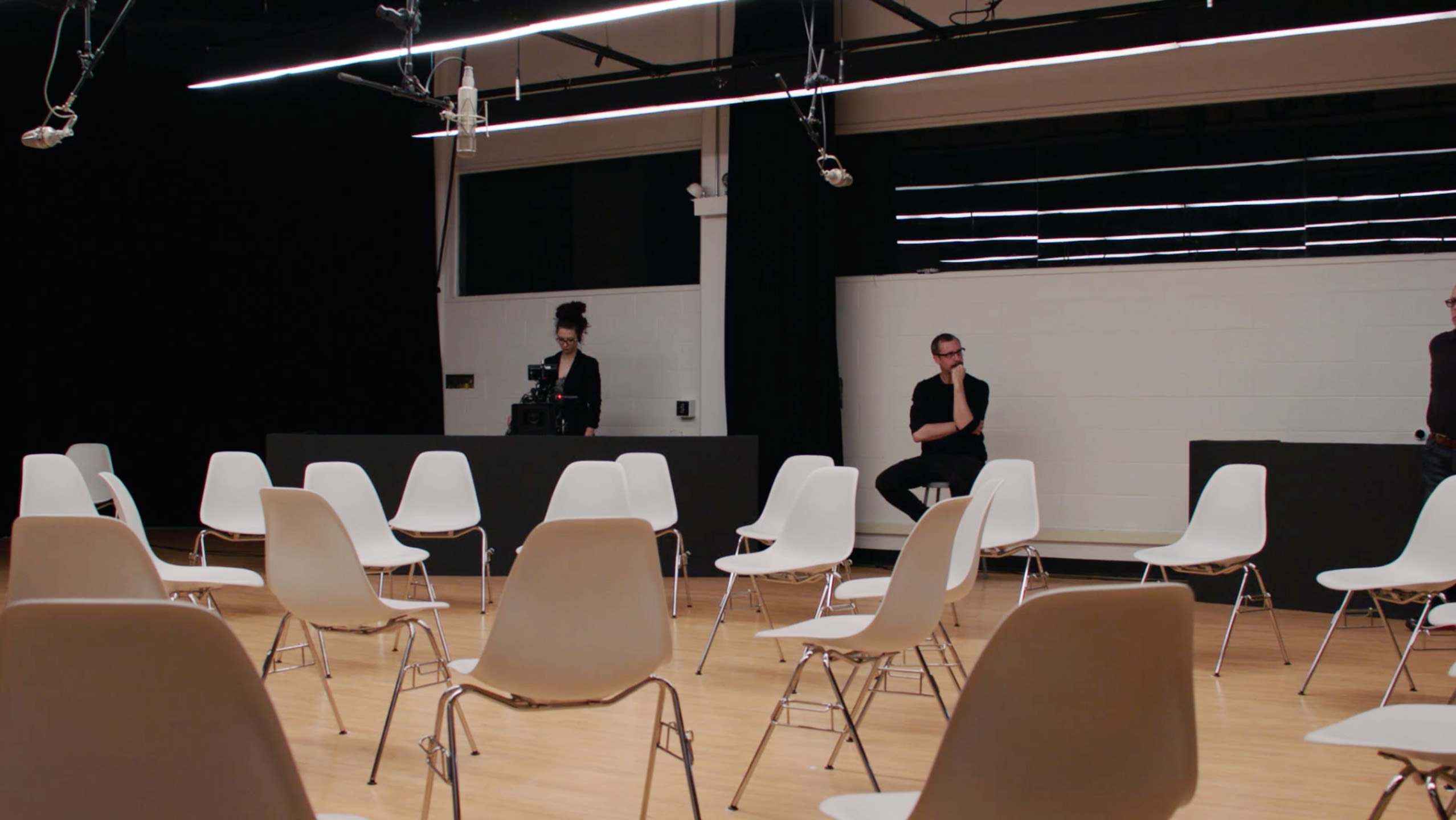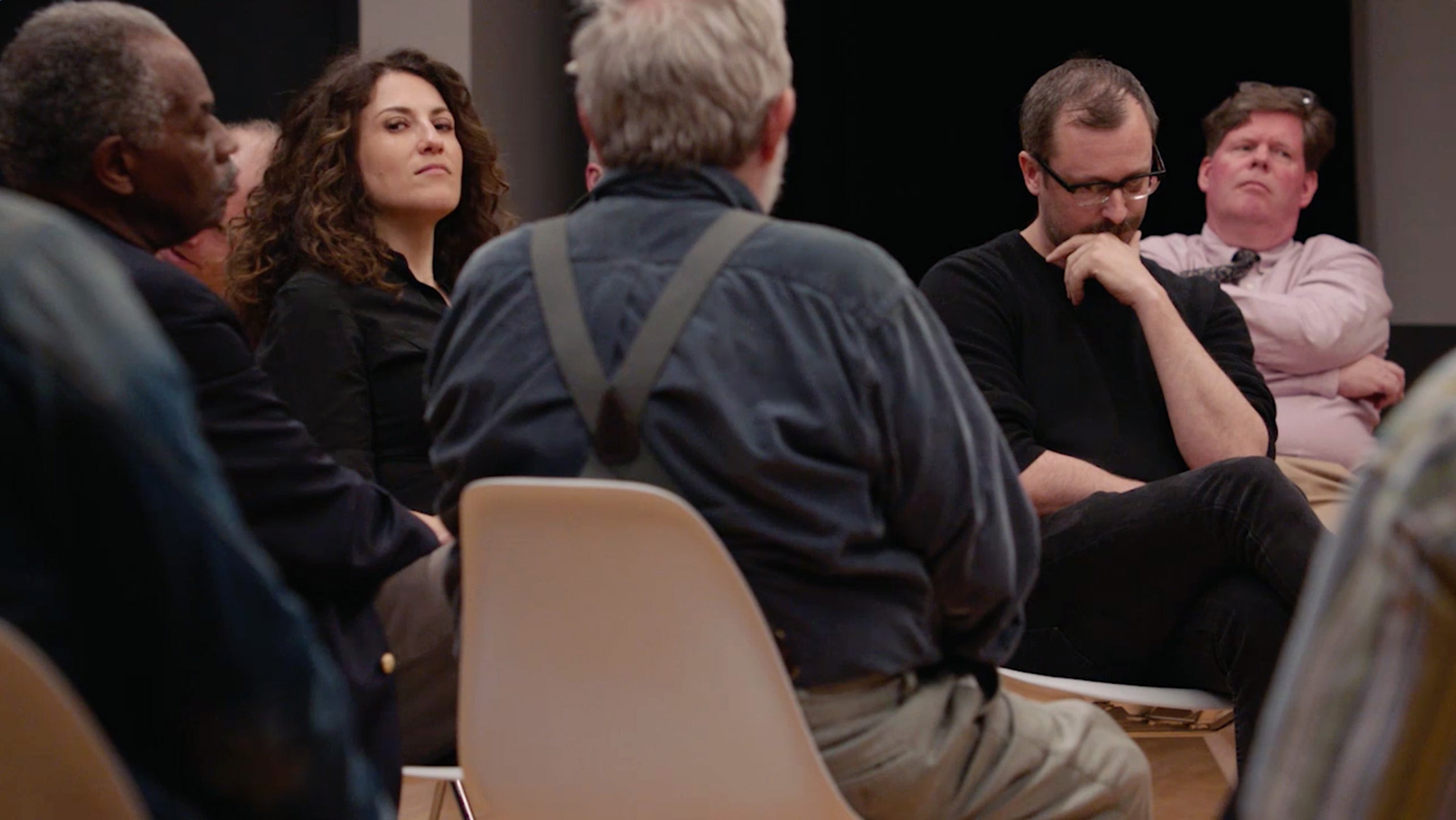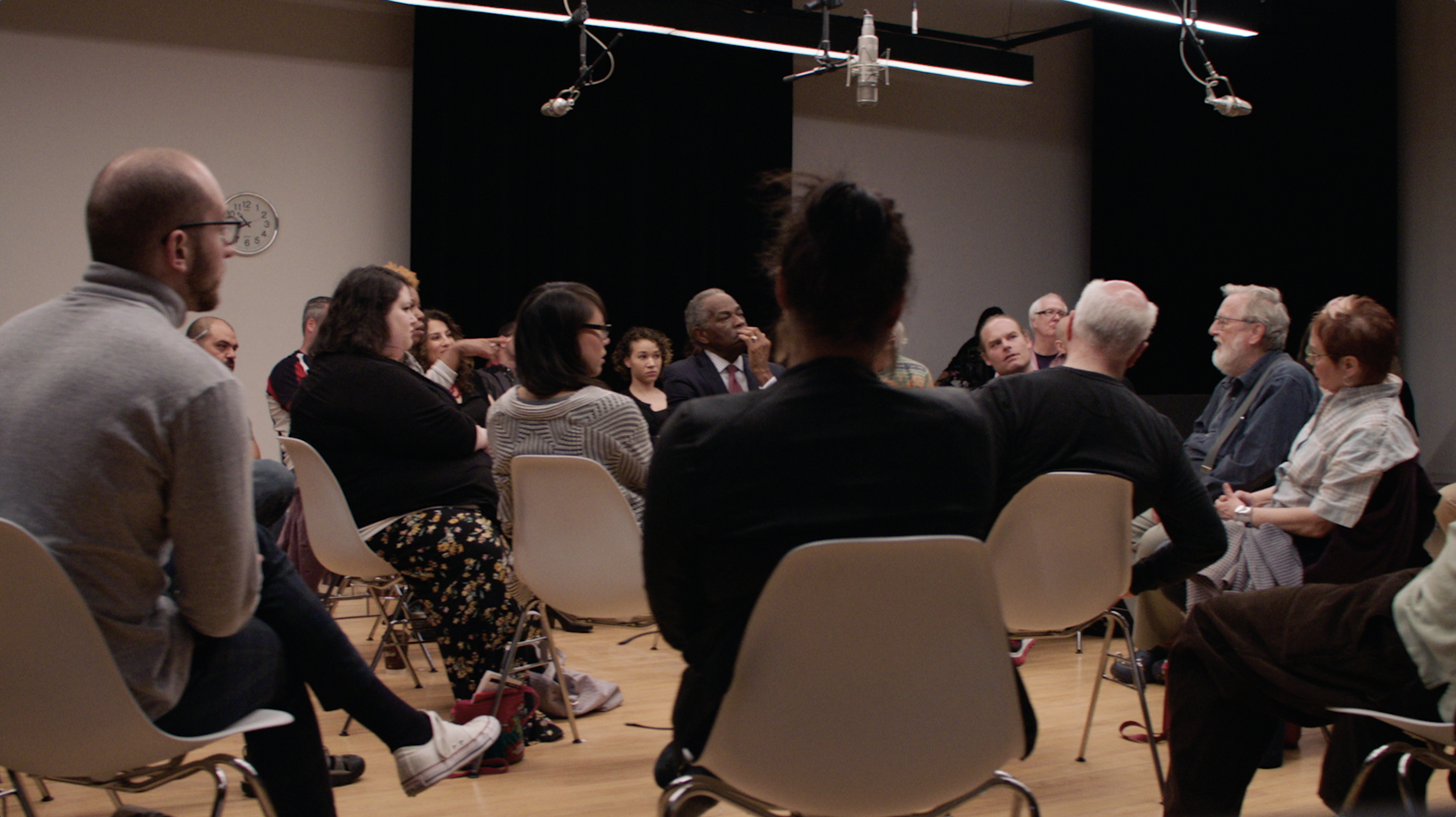The Task (2017)
Single channel video and sound
118 min.
Ledare’s 2017 film The Task comprises an intervention into a renowned method of experimental social psychology initially developed in the 1950s at London’s Tavistock Institute. Ledare began by staging an immersive three-day Group Relations conference—an intricate feedback apparatus designed to surface and reflect upon unconscious group phenomena—around which he conceived a complex filming structure. In addition to directing the film’s crew, Ledare assembled a diverse group of twenty-eight participants that represented a cross-section of Chicago and secured the collaboration of ten psychologists trained in the method. During a sequence of small and large group encounters, the group enacts a temporary institution whose purpose is to study itself—an abstract “task” that allows participants to examine the identities, roles, desires and biases that individuals import into the group, as well as the emergence of conscious and unconscious group dynamics.
Arguably more anthropological than therapeutic, this model hinges on a rigorous scripting of restraints—withholding any clear topic of discussion; adhering to the “here and now”; and recasting the typical dependency relationship between patient/psychologist through the rubric of “authority.” Into this container Ledare introduced an unprecedented modification, however: the presence of a camera crew and the artist as observers and collaborators. Like sprinkling sand into the machine, this intervention complicates the system by making its members grapple with the effects of external social and technological forces—eliciting contradictory fantasies and fears that influence how the camera is symbolized and used by the group. By throwing into crisis authority and boundaries among all members—including the artist—Ledare calls attention, by analogy, to power structures that govern our relations to one another in a society where we are increasingly both observers and observed.
The Task sites the viewer at the intersection between the individual, the group and the camera. The film’s seven chapters focus on the last three of four large group sessions that took place, each of which included all 28 participants, three psychologists (or “consultants”), six camera operators, three observers—and Ledare himself, whose presence serves as both rupture and mirror. Throughout the film, the group’s members confront the emergence of complex patterns of stereotyping and other projections of identity; assumptions around authority are defined, questioned, and transgressed; and viewers of the film are implicated as its members negotiate subjective forces which exceed the structured constraints of the self-made system.
link to view
password: doublebind
Conversation on The Task with Benjamin Piekut
PDF of The Plot installation at The Art Institute of Chicago
Additional reading on Tavistock
Single channel video and sound
118 min.
Ledare’s 2017 film The Task comprises an intervention into a renowned method of experimental social psychology initially developed in the 1950s at London’s Tavistock Institute. Ledare began by staging an immersive three-day Group Relations conference—an intricate feedback apparatus designed to surface and reflect upon unconscious group phenomena—around which he conceived a complex filming structure. In addition to directing the film’s crew, Ledare assembled a diverse group of twenty-eight participants that represented a cross-section of Chicago and secured the collaboration of ten psychologists trained in the method. During a sequence of small and large group encounters, the group enacts a temporary institution whose purpose is to study itself—an abstract “task” that allows participants to examine the identities, roles, desires and biases that individuals import into the group, as well as the emergence of conscious and unconscious group dynamics.
Arguably more anthropological than therapeutic, this model hinges on a rigorous scripting of restraints—withholding any clear topic of discussion; adhering to the “here and now”; and recasting the typical dependency relationship between patient/psychologist through the rubric of “authority.” Into this container Ledare introduced an unprecedented modification, however: the presence of a camera crew and the artist as observers and collaborators. Like sprinkling sand into the machine, this intervention complicates the system by making its members grapple with the effects of external social and technological forces—eliciting contradictory fantasies and fears that influence how the camera is symbolized and used by the group. By throwing into crisis authority and boundaries among all members—including the artist—Ledare calls attention, by analogy, to power structures that govern our relations to one another in a society where we are increasingly both observers and observed.
The Task sites the viewer at the intersection between the individual, the group and the camera. The film’s seven chapters focus on the last three of four large group sessions that took place, each of which included all 28 participants, three psychologists (or “consultants”), six camera operators, three observers—and Ledare himself, whose presence serves as both rupture and mirror. Throughout the film, the group’s members confront the emergence of complex patterns of stereotyping and other projections of identity; assumptions around authority are defined, questioned, and transgressed; and viewers of the film are implicated as its members negotiate subjective forces which exceed the structured constraints of the self-made system.
link to view
password: doublebindConversation on The Task with Benjamin Piekut
PDF of The Plot installation at The Art Institute of Chicago
Additional reading on Tavistock



